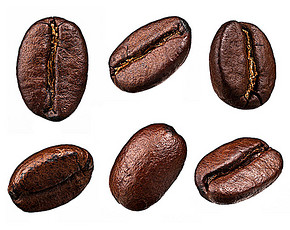Introduction to the taste characteristics and geographical location of Yega Xuefei coffee
Pay attention to coffee reviews (Weixin Official Accounts vdailycom ) and find a beautiful cafe to open your own shop
Yejia sherry is a well-deserved representative of the third wave coffee, one of its characteristics is its easily identifiable flavor. The second tends to be characteristic at an a value of 55, requiring a deeper roast than traditional Central and South American washed beans, and may be suitable for an a value of about 25 to 40
The place where Ye Jia Xue Fei is planted can be described as heaven on earth. It is a small village in a mountain stream. It is full of weapons and has four seasons like spring. Even in summer it was breezy, cool but not hot. Comfortable and pleasant climate, not only creates a refreshing living environment, but also breeds a unique citrus and floral coffee flavor. In most of these areas, coffee trees are grown alone or mixed with other crops in farmers 'backyards.
Ethiopia is rectangular in shape, with a ratio of length to width of 3:2. From top to bottom by green, yellow, red three parallel equal horizontal rectangle composition, flag surface middle has the national emblem pattern. Since the late 19th century, Ethiopia has adopted a green, yellow and red striped flag. Ethiopia was the first African country in modern history to join the ranks of free peoples.

By the 1950s and 1960s, many African countries had become independent one after another, and they adopted green, yellow and red as their national flags, so they were called "pan-African colors". Ethiopia is one of the ancient African countries, with a long history of more than 3000 years, giving green, yellow and red three colors a deeper origin in this land. Historically, they have been associated with the liturgy of the Coptic Church, enshrined as symbols of the Trinity of the Father, the Son and the Holy Spirit, embodying the three virtues of loyalty, hope and mercy advocated by human freedom. These three colors also represent three regions of Ethiopia: Tikrit (red), Amhara (yellow) and Theoya (green). Green represents fertile land, mild climate and abundant plant resources, but also a symbol of hope for the future; yellow symbolizes peace and fraternity, but also represents the people's determination to build the country; red symbolizes that the people are ready to shed blood to defend the motherland On December 8, 1994, the Ethiopian Constitutional Assembly adopted the fourth constitution-the Constitution of the Federal Democratic Republic of Ethiopia, which came into effect on August 22 of the following year. The new constitution has 11 chapters and 106 articles, stipulating that Ethiopia is a federal country with separation of powers and parliamentary system. The President is the Head of State for a term of six years. The Prime Minister and Cabinet have the highest executive power. The majority party or political alliance forms a cabinet and is collectively responsible to the House of People's Representatives.
All ethnic groups are equal and autonomous and enjoy the right of national self-determination and secession. After the legislative body of any ethnic group adopts the request for secession by a two-thirds majority, the federal government shall organize a referendum for that ethnic group within three years. The majority agrees to secede from the Federation. A canton may use its native language as a cantonal working language. Private property is guaranteed, but the State has the right to expropriate it for compensation. Urban and rural land and natural resources shall be owned by the state and shall not be sold, sold or transferred. A multi-ethnic national army and police force shall be formed, and the army shall not interfere in government affairs. Guarantee of democratic freedoms and fundamental rights of citizens
Ethiopia's Yirgacheffe coffee is petite, but it is gentle and delicate, sweet and pleasant. As the home of coffee, Ethiopia's millennia of growing and processing traditions have resulted in high-quality washed Arabica beans. Light baked with unique lemon, floral and honey sweet aromas, soft fruit acids and citrus notes, fresh and bright taste. No milk, no sugar, let the rich texture and unique soft floral brush your taste buds, leaving endless aftertaste…
Yegashefi is a small town, 700- 21,000 meters above sea level, synonymous with Ethiopian fine coffee. It is a wetland since ancient times, and the old saying "Yirga" means "settle down" and "Cheffe" means "wetland". The way coffee is produced and the flavor is so prominent that Ethiopian coffee farmers compete to be proud of their coffee with Yegashfi flavor, which has become Africa's most famous coffee producing area.
Important Notice :
前街咖啡 FrontStreet Coffee has moved to new addredd:
FrontStreet Coffee Address: 315,Donghua East Road,GuangZhou
Tel:020 38364473
- Prev

Characteristics of sunny Yega Chuefei Coffee
Following Cafe Review (Wechat official account vdailycom) found that Beautiful Cafe opened a small shop of its own. Recently, foreign professional coffee tasting website Coffee Review recommended three G1-level Chevy to the store in small batches. Here is a brief introduction of these three Chevy. The first one comes from the Cochell production area (Adulina Kochere) of Adulina, and the variety of coffee beans is H.
- Next

Ye Jia Xue Fei Coffee
Following Cafe Review (Wechat official account vdailycom) found that Beautiful Cafe opened a small shop of its own, washed Yejia Chefe (Yergacheffe yirgacheffe) is one of the best alpine grown coffee beans, it has a good sour taste, taste and excellent mocha coffee bean flavor and aroma. Because of these characteristics, Yega snow coffee has a great demand and a high price.
Related
- Detailed explanation of Jadeite planting Land in Panamanian Jadeite Manor introduction to the grading system of Jadeite competitive bidding, Red bid, Green bid and Rose Summer
- Story of Coffee planting in Brenka region of Costa Rica Stonehenge Manor anaerobic heavy honey treatment of flavor mouth
- What's on the barrel of Blue Mountain Coffee beans?
- Can American coffee also pull flowers? How to use hot American style to pull out a good-looking pattern?
- Can you make a cold extract with coffee beans? What is the right proportion for cold-extracted coffee formula?
- Indonesian PWN Gold Mandrine Coffee Origin Features Flavor How to Chong? Mandolin coffee is American.
- A brief introduction to the flavor characteristics of Brazilian yellow bourbon coffee beans
- What is the effect of different water quality on the flavor of cold-extracted coffee? What kind of water is best for brewing coffee?
- Why do you think of Rose Summer whenever you mention Panamanian coffee?
- Introduction to the characteristics of authentic blue mountain coffee bean producing areas? What is the CIB Coffee Authority in Jamaica?

